ChangHwan Kim
Coordination of two robotic manipulators for object retrieval in clutter
Sep 30, 2021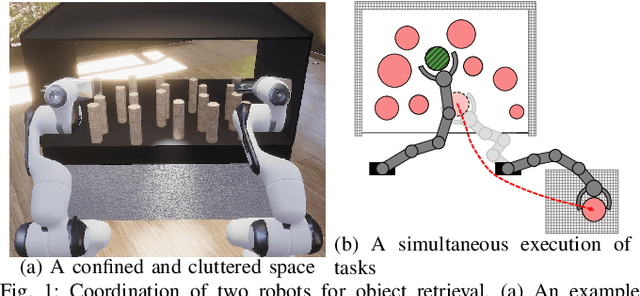
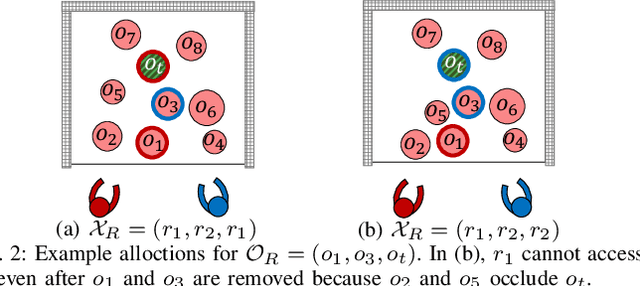
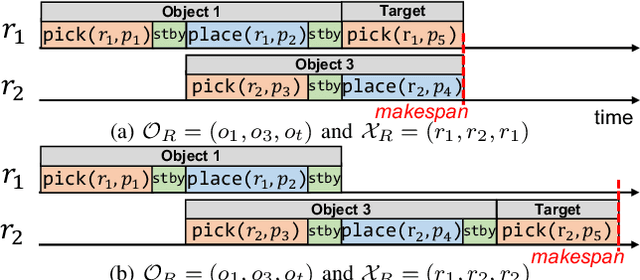
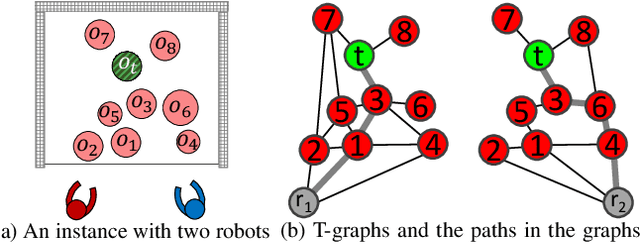
Abstract:We consider the problem of retrieving a target object from a confined space by two robotic manipulators where overhand grasps are not allowed. If other movable obstacles occlude the target, more than one object should be relocated to clear the path to reach the target object. With two robots, the relocation could be done efficiently by simultaneously performing relocation tasks. However, the precedence constraint between the tasks (e.g, some objects at the front should be removed to manipulate the objects in the back) makes the simultaneous task execution difficult. We propose a coordination method that determines which robot relocates which object so as to perform tasks simultaneously. Given a set of objects to be relocated, the objective is to maximize the number of turn-takings of the robots in performing relocation tasks. Thus, one robot can pick an object in the clutter while the other robot places an object in hand to the outside of the clutter. However, the object to be relocated may not be accessible to all robots, so taking turns could not always be achieved. Our method is based on the optimal uniform-cost search so the number of turn-takings is proven to be maximized. We also propose a greedy variant whose computation time is shorter. From experiments, we show that our method reduces the completion time of the mission by at least 22.9% (at most 27.3%) compared to the methods with no consideration of turn-taking.
Does MAML really want feature reuse only?
Aug 20, 2020

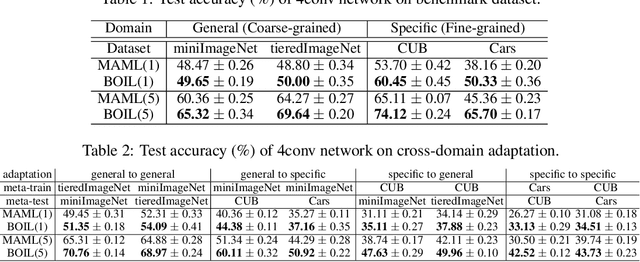

Abstract:Meta-learning, the effort to solve new tasks with only a few samples, has attracted great attention in recent years. Model Agnostic Meta-Learning (MAML) is one of the most representative gradient-based meta-learning algorithms. MAML learns new tasks with a few data samples with inner updates from a meta-initialization point and learns the meta-initialization parameters with outer updates. Recently, it has been hypothesized that feature reuse, which makes little change in efficient representations, is the dominant factor in the performance of meta-initialized model through MAML rather than rapid learning, which makes a big change in representations. In this work, we propose a novel meta-learning algorithm, coined as BOIL (Body Only update in Inner Loop), that updates only the body (extractor) of the model and freezes the head (classifier) of the model during inner loop updates. The BOIL algorithm thus heavily relies on rapid learning. Note that BOIL is the opposite direction to the hypothesis that feature reuse is more efficient than rapid learning. We validate the BOIL algorithm on various data sets and show significant performance improvement over MAML. The results imply that rapid learning in gradient-based meta-learning approaches is necessary.
Where to relocate?: Object rearrangement inside cluttered and confined environments for robotic manipulation
Mar 24, 2020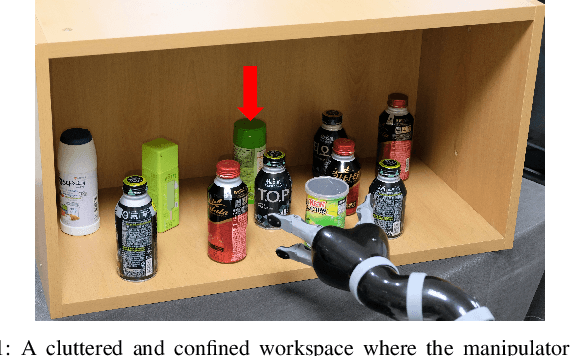
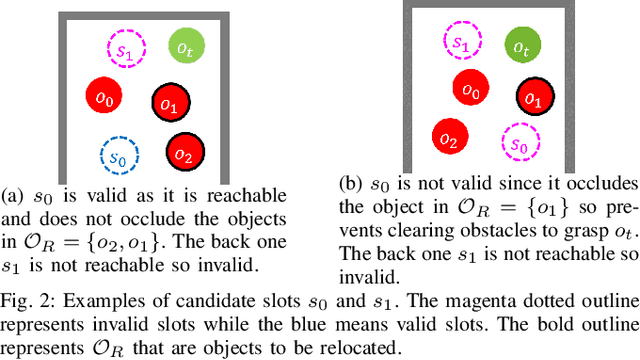

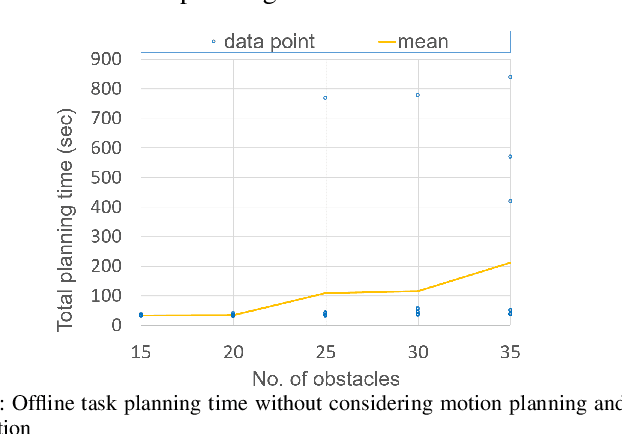
Abstract:We present an algorithm determining where to relocate objects inside a cluttered and confined space while rearranging objects to retrieve a target object. Although methods that decide what to remove have been proposed, planning for the placement of removed objects inside a workspace has not received much attention. Rather, removed objects are often placed outside the workspace, which incurs additional laborious work (e.g., motion planning and execution of the manipulator and the mobile base, perception of other areas). Some other methods manipulate objects only inside the workspace but without a principle so the rearrangement becomes inefficient. In this work, we consider both monotone (each object is moved only once) and non-monotone arrangement problems which have shown to be NP-hard. Once the sequence of objects to be relocated is given by any existing algorithm, our method aims to minimize the number of pick-and-place actions to place the objects until the target becomes accessible. From extensive experiments, we show that our method reduces the number of pick-and-place actions and the total execution time (the reduction is up to 23.1% and 28.1% respectively) compared to baseline methods while achieving higher success rates.
Fast and resilient manipulation planning for target retrieval in clutter
Mar 24, 2020
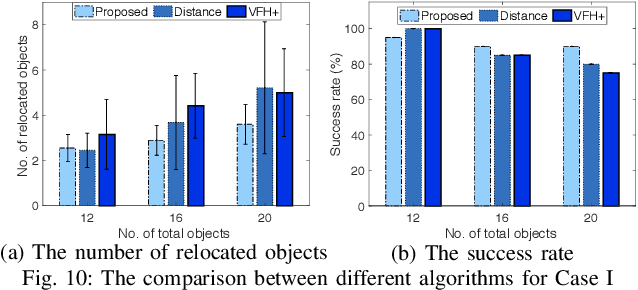
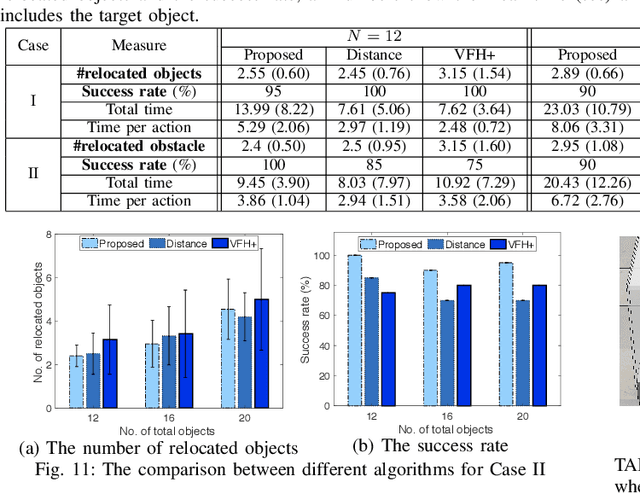
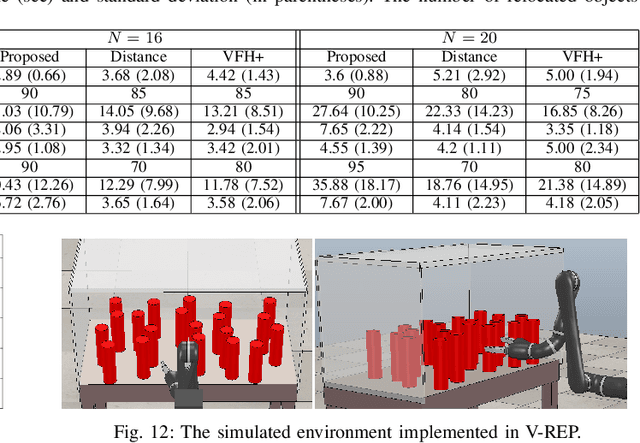
Abstract:This paper presents a task and motion planning (TAMP) framework for a robotic manipulator in order to retrieve a target object from clutter. We consider a configuration of objects in a confined space with a high density so no collision-free path to the target exists. The robot must relocate some objects to retrieve the target without collisions. For fast completion of object rearrangement, the robot aims to optimize the number of pick-and-place actions which often determines the efficiency of a TAMP framework. We propose a task planner incorporating motion planning to generate executable plans which aims to minimize the number of pick-and-place actions. In addition to fully known and static environments, our method can deal with uncertain and dynamic situations incurred by occluded views. Our method is shown to reduce the number of pick-and-place actions compared to baseline methods (e.g., at least 28.0% of reduction in a known static environment with 20 objects).
Planning for target retrieval using a robotic manipulator in cluttered and occluded environments
Jul 09, 2019
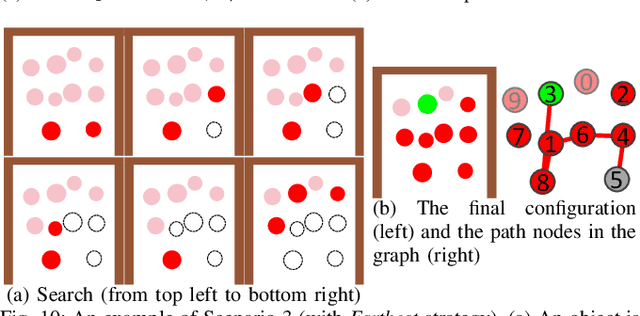
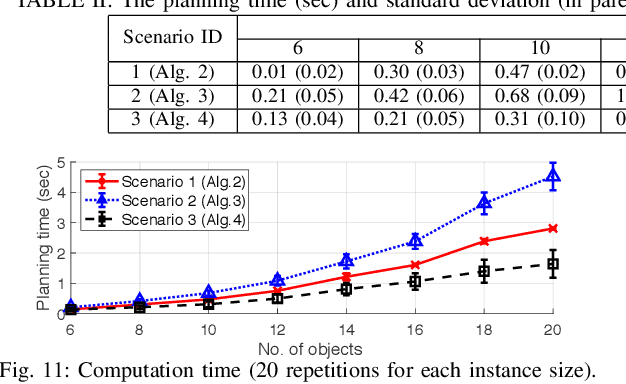
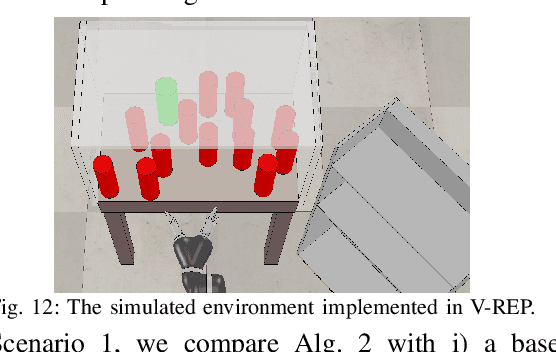
Abstract:This paper presents planning algorithms for a robotic manipulator with a fixed base in order to grasp a target object in cluttered environments. We consider a configuration of objects in a confined space with a high density so no collision-free path to the target exists. The robot must relocate some objects to retrieve the target while avoiding collisions. For fast completion of the retrieval task, the robot needs to compute a plan optimizing an appropriate objective value directly related to the execution time of the relocation plan. We propose planning algorithms that aim to minimize the number of objects to be relocated. Our objective value is appropriate for the object retrieval task because grasping and releasing objects often dominate the total running time. In addition to the algorithm working in fully known and static environments, we propose algorithms that can deal with uncertain and dynamic situations incurred by occluded views. The proposed algorithms are shown to be complete and run in polynomial time. Our methods reduce the total running time significantly compared to a baseline method (e.g., 25.1% of reduction in a known static environment with 10 objects
 Add to Chrome
Add to Chrome Add to Firefox
Add to Firefox Add to Edge
Add to Edge